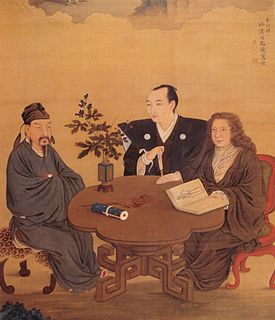 W
WRangaku is a body of knowledge developed by Japan through its contacts with the Dutch enclave of Dejima, which allowed Japan to keep abreast of Western technology and medicine in the period when the country was closed to foreigners from 1641 to 1853 because of the Tokugawa shogunate's policy of national isolation (sakoku).
 W
WAoki Konyō (青木昆陽) was a Confucian scholar, minor hatamoto and pioneer rangaku scholar in early Edo period Japan. He is also credited with introducing the cultivation of sweet potato to many parts of Japan.
 W
WAndreas Cleyer was a German physician, pharmacist, botanist, trader and Japanologist.
 W
WThe Dutch Golden Age was a period in the history of the Netherlands, roughly spanning the era from 1588 to 1672, in which Dutch trade, science, and art and the Dutch military were among the most acclaimed in Europe. The first section is characterized by the Eighty Years' War, which ended in 1648. The Golden Age continued in peacetime during the Dutch Republic until the end of the century, when costly conflicts, including the Franco-Dutch War and War of the Spanish Succession fuelled economic decline.
 W
WHanaoka Seishū was a Japanese surgeon of the Edo period with a knowledge of Chinese herbal medicine, as well as Western surgical techniques he had learned through Rangaku. Hanaoka is said to have been the first to perform surgery using general anesthesia.
 W
WHotta Masayoshi was the 5th Hotta daimyō of the Sakura Domain in the Japanese Edo period, who served as chief rōjū in the Bakumatsu period Tokugawa shogunate, where he played an important role in the negotiations of the Ansei Treaties with various foreign powers.
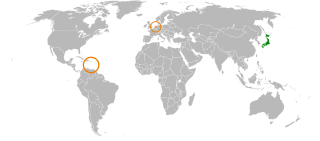 W
WJapan–Netherlands relations describes the foreign relations between Japan and the Netherlands. Relations between Japan and the Netherlands date back to 1609, when the first formal trade relations were established.
 W
WKaitai Shinsho is a medical text translated into Japanese during the Edo period. It was written by Sugita Genpaku, and was published by Suharaya Ichibee (須原屋市兵衛) in 1774, the third year of An'ei. The body comprises four volumes, the illustrations, one. The contents are written kanbun-style. It is based on the Dutch-language translation Ontleedkundige Tafelen, often known in Japan as Tafel Anatomie , of Johann Adam Kulmus’ Latin Tabulae Anatomicae, published before 1722 in Gdańsk, Polish–Lithuanian Commonwealth. As a full-blown translation from a Western language, it was the first of its kind in Japan.
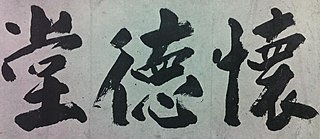 W
WThe Kaitokudō (Japanese:懐徳堂) was a merchant academy located in Osaka, Japan, during the Tokugawa period. Although it opened its doors in 1724, it was founded officially in 1726 by Nakai Shūan. It remained a public institution until 1868, although there have been modern revivals.
 W
WKaiyō Maru (開陽丸) was one of Japan's first modern warships, a frigate powered by both sails and steam. She was built in the Netherlands, and served in the Boshin War as part of the navy of the Tokugawa shogunate, and later as part of the navy of the Republic of Ezo. She was wrecked on 15 November 1868, off Esashi, Hokkaido, Japan.
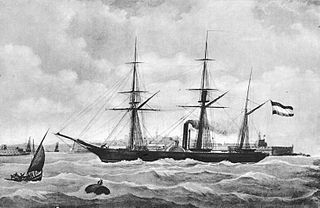 W
WKankō Maru was Japan's first steam-powered warship. It was presented to the Tokugawa shogunate ruling Japan during the Bakumatsu period as a gift from King William III of the Netherlands to assist Janus Henricus Donker Curtius, head of the Nederlandsche Handel-Maatschappij in Japan in his efforts to establish formal diplomatic relations and the opening of Japanese ports to Dutch merchant vessels.
 W
WKutsuki Masatsuna , also known as Kutsuki Oki-no kami Minamoto-no Masatsuna, was a hereditary Japanese daimyō of Oki and Ōmi with holdings in Tanba and Fukuchiyama. His warrior clan was amongst the hereditary vassals of the Tokugawa family in the Edo period. His childhood name was Tomojiro (斧次郎).
 W
WThe Nagasaki Naval Training Center was a naval training institute, between 1855 when it was established by the government of the Tokugawa shogunate, until 1859, when it was transferred to Tsukiji in Edo.
 W
WOgata Kōan was a Japanese physician and rangaku scholar in late Edo period Japan, noted for establishing an academy which later developed into Osaka University. Many of his students subsequently played important roles in the Meiji Restoration and the westernization of Japan in the Meiji period. His true name was Ogata Koreaki or Ogata Akira ; the name of Kōan was his courtesy name.
 W
WŌmura Sumihiro was the 12th and final daimyō of Ōmura Domain in Hizen Province, Kyūshū, Japan. His courtesy title was Tango-no-kami.
 W
WCount Sano Tsunetami was a Japanese statesman and founder of the Japanese Red Cross Society. His son, Admiral Sano Tsuneha, was a leading figure in the establishment of the Scout Association of Japan.
 W
WCaspar Schamberger was a German surgeon. His name represents the first school of Western medicine in Japan and the beginning of rangaku, or Dutch studies.
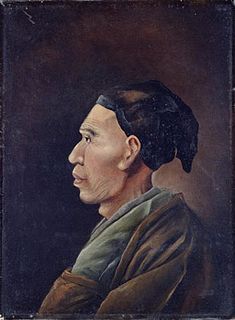 W
WShiba Kōkan , born Andō Kichirō (安藤吉次郎) or Katsusaburō (勝三郎), was a Japanese painter and printmaker of the Edo period, famous both for his Western-style yōga paintings, in imitation of Dutch oil painting styles, methods, and themes, which he painted as Kōkan, and his ukiyo-e prints, which he created under the name Harushige, but also producing forgeries of the works of Suzuki Harunobu. He is said to have boasted of his ability to forge the great master so well. He also was engaged in Western learning (Rangaku) in the field of astronomy.
 W
WSugita Genpaku was a Japanese physician and scholar known for his translation of Kaitai Shinsho and a founder of Rangaku and ranpō in Japan. He was one of the first Japanese scholars in Edo to study the Dutch language and is credited with being one of the first Japanese physicians to study Western medical teachings in Japan.
 W
WTakano Chōei was a prominent scholar of Rangaku during Bakumatsu period Japan.
 W
WTanaka Hisashige was a Japanese rangaku scholar, engineer and inventor during the Bakumatsu and early Meiji period in Japan. In 1875, he founded what became the Toshiba Corporation. He has been called the "Thomas Edison of Japan" or "Karakuri Giemon."
 W
WTekijuku (適塾) was a school established in Senba , Osaka, the main trading route between Nagasaki and Edo in 1838 during the Tenpō era of the late Edo period. Its founder was Ogata Kōan, a doctor and scholar of Dutch studies (Rangaku). The foreign language curriculum focused primarily on medicine, but also taught astronomy and other western sciences.
 W
WUdagawa Yōan was a 19th-century Japanese scholar of Western studies, or "Rangaku". In 1837, he published the first volume of his Introduction to Chemistry , a compilation of scientific books in Dutch, which describes a wide range of scientific knowledge from the West. Most of the Dutch original material appears to be derived from William Henry's 1799 Elements of Experimental Chemistry. In particular, the book contains a very detailed description of the electric battery invented by Volta forty years earlier in 1800. The battery itself was constructed by Udagawa in 1831 and used in experiments, including medical ones, based on a belief that electricity could help cure illnesses.
 W
WYōga is a style of artistic painting in Japan, typically of Japanese subjects, themes, or landscapes, but using Western (European) artistic conventions, techniques, and materials. The term was coined in the Meiji period (1868–1912) to distinguish Western-influenced artwork from indigenous, or more traditional Japanese paintings, or Nihonga (日本画).
 W
WYoshio Kōsaku , also known as Yoshio Kōgyū was a Japanese physician and scholar of "Dutch studies" (Rangaku), and the chief Dutch translator in Nagasaki, often accompanying Dutch East India Company officials on missions to Edo and other official business.